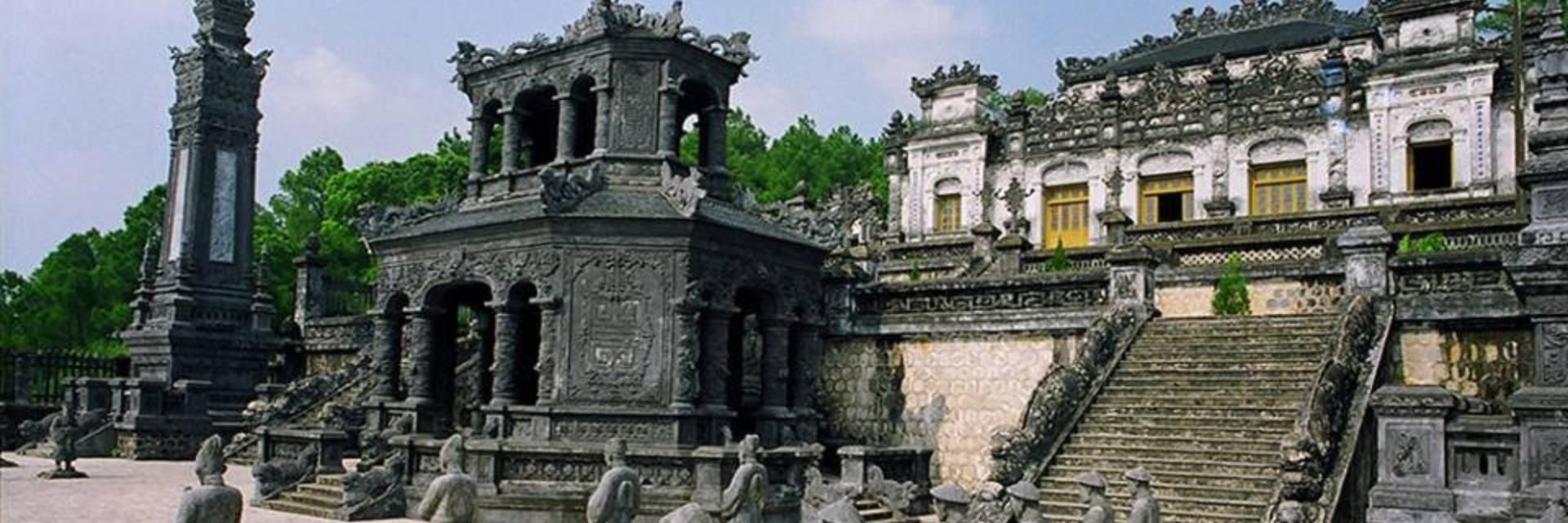A trip to Hue Vietnam will not be complete without exploring the final resting places of the Nguyen emperors. These tombs in Hue stand as a poignant testament to the illustrious past, preserving the legacies of the emperors who shaped the nation's history. Stepping into these ancient monuments also offers an exciting journey into one of Vietnam’s most vibrant historical periods.
General information about the royal tombs of the Nguyen Emperors
The Nguyen Dynasty of Vietnam existed from 1802 to 1945 with 13 kings. However, due to many historical reasons, only 7 royal tombs of the Nguyen Emperors in Hue still exist today. They are Gia Long, Minh Mang, Thieu Tri, Tu Duc, Duc Duc, Dong Khanh and Khai Dinh.
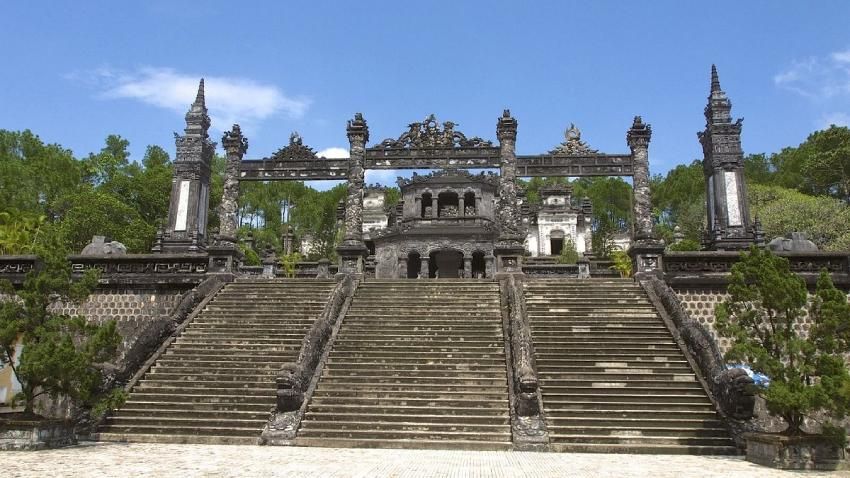
Most of the Hue tombs were built when the king was still on the throne. The artistic and ideological themes were proposed by the king. The architecture was approved by the king and the king himself often supervised the construction. All of the tombs were built and planned based on the Eastern fengshui philosophy. The seven royal tombs of the Nguyen Emperors in Hue are located in a quite separate area in the west of the capital. According to ancient beliefs, when the king died, he and the sun went to the west to rest in peace. This is the reason why the tombs are in the West.
The tomb construction process and construction time are fairly time-consuming, including many steps. They are finding land, drawing a map, determining locations to build structures, preparing materials, labor, transporting materials, starting construction, holding a ceremony to pay homage to the mountain god and earth god, and renovating and restoring. Such a long time is one of the reasons why there are only 7 royal tombs of the Nguyen Emperors while there are 13 kings.
Exploring seven royal tombs of the Nguyen Emperors in Hue
Each of the seven royal tombs of the Nguyen Emperors in Hue has their architectural characteristics and profound philosophies about life. Let’s find detailed information about each of the tombs.
Gia Long Tomb
- Address: Dinh Mon Village, Huong Tho Commune, Hue City, Thua Thien Hue Province
- Opening hours: 07.00 a.m. - 05.30 p.m.
- Entrance fee: VND 150,000/ turn/ adult
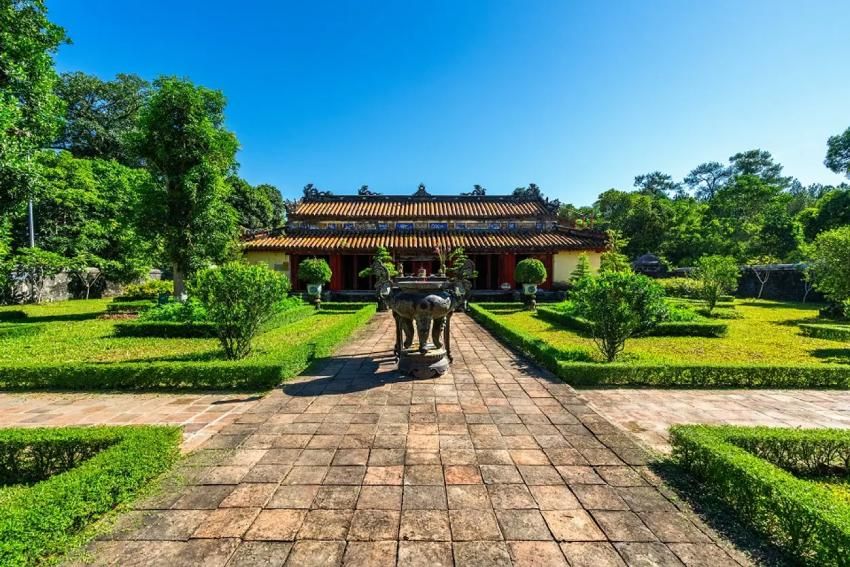
Gia Long Tomb is the final resting place of the first emperor of the Nguyen Dynasty. It is one of the simplest royal tombs in Hue Vietnam. The tomb is located gracefully by the banks of the Perfume River with a refreshing ambiance throughout the year. Gia Long Tomb is a true masterpiece, where nature and architecture are intertwined.
Minh Mang Tomb
- Address: Huong Tho Commune, Huong Tra Town, Thua Thien Hue Province
- Opening hours: 07.30 a.m. - 05.00 p.m.
- Entrance fee: VND 150,000/ turn/ adult
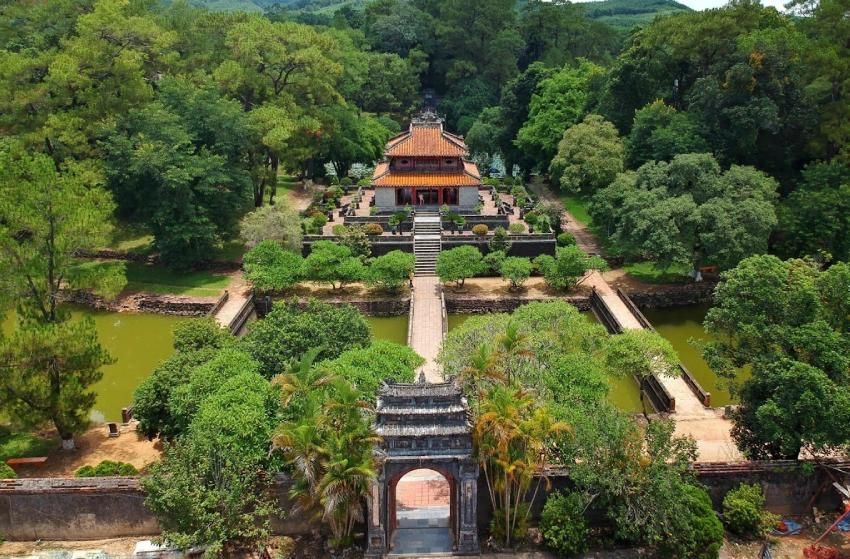
The Mausoleum Of Emperor Minh Mang is a not-to-be-missed attraction on any Hue tombs tour. Considered one of the most impressive tombs in Hue, Minh Mang Tomb is a prominent example of traditional Vietnamese architecture. Stepping into the mausoleum, you will be immersed in the picturesque scenery with endless rows of pine trees, a lotus pond, unique structures, and imposing statues.
Thieu Tri Tomb
- Address: Thuy Bang Village, Huong Thuy Commune, Hue City, Thua Thien Hue Province
- Opening hours: 07.00 a.m. - 05.00 p.m.
- Entrance fee: VND 50,000/ turn/ adult
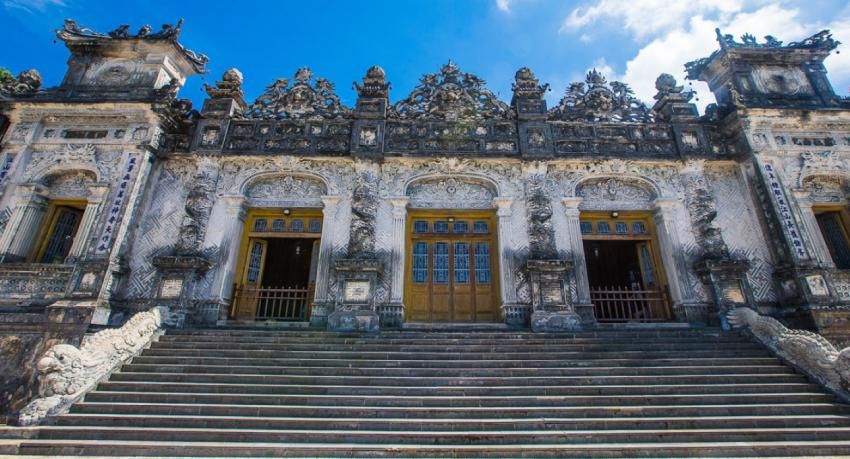
Located on a peaceful hill, the Tomb of King Thieu Tri stands out as one of the most ancient tombs in Hue, constructed in only 10 months. The tomb has no protective walls and is surrounded by lush orchards and sprawling rice fields. Combining the architectural features of the tombs of Gia Long and Minh Mang, Thieu Tri Tomb stands out amidst the tranquil countryside of Hue.
Tu Duc Tomb
- Address: Thuy Ba Village, Thuy Bieu Commune, Thuy Xuan Ward, Hue City, Thua Thien Hue Province
- Opening hours: 07.00 a.m. - 05.30 p.m.
- Entrance fee: VND 150,000/ turn/ adult
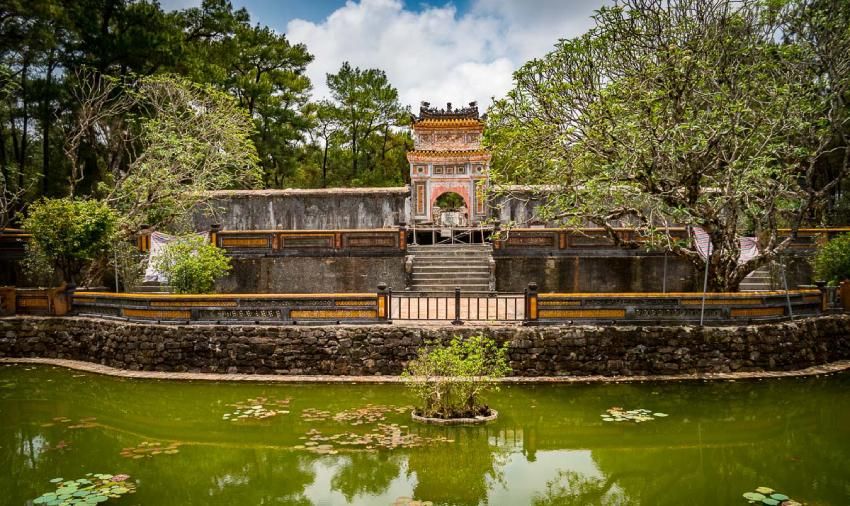
Tu Duc Tomb is considered one of the most beautiful and romantic tombs in Hue Vietnam thanks to the harmonious blend of its impressive structure and the surrounding nature. Built from 1864 to 1867, the tomb resembles a vast park with picturesque lakes and lush greenery. It served as a tranquil retreat for the emperor to read, write poetry, and relax. Exploring Tu Duc Tomb, you will see the poetic and opulent soul of the late emperor.
Duc Duc Tomb
- Address: Phuoc Vinh Ward, Hue City, Thua Thien Hue Province
- Opening hours: 07.30 a.m. - 05.30 p.m.
- Entrance fee: free
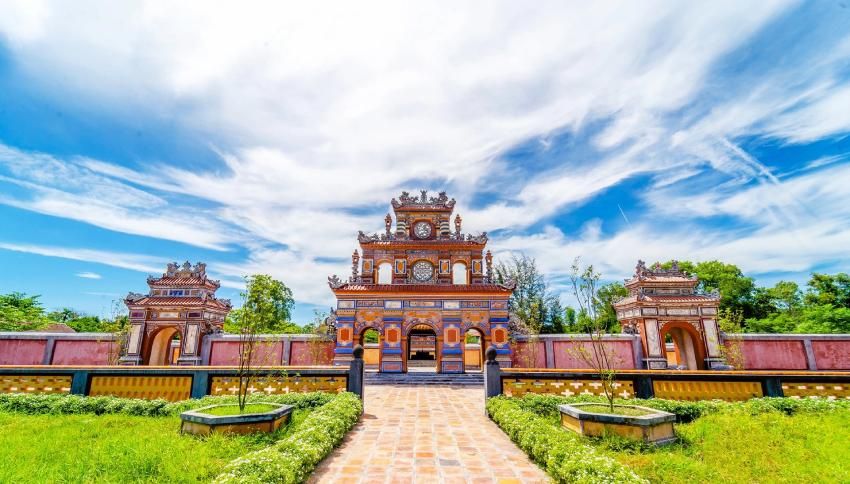
Duc Duc Tomb was built in 1889, initially serving as the final resting place for Emperor Duc Duc who only reigned for 3 days. The site later became the burial place for his wife, his son (Emperor Thanh Thai), and his grandson (Emperor Duy Tan). Compared to other tombs in Hue, Duc Duc Tomb is the smallest and least ambitious structure, covering an area of 3,445 square meters.
Khai Dinh Tomb
- Address: Thuy Bang Village, Huong Thuy Commune, Hue City, Thua Thien Hue Province
- Opening hours: 07.00 a.m. - 05.30 p.m.
- Entrance fee: VND 150,000/ turn/ adult
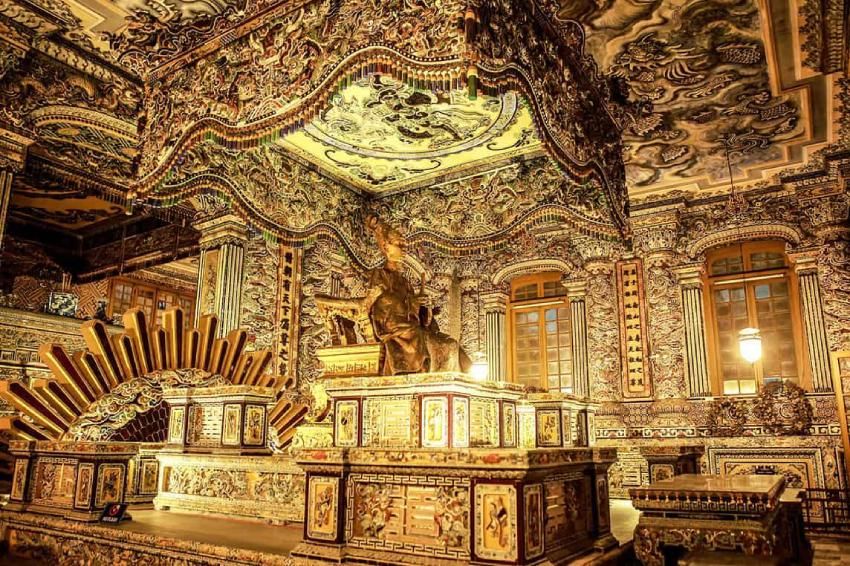
As the final resting place of Emperor Khai Dinh, the most eccentric and unusual emperor in the Nguyen Dynasty, Khai Dinh Tomb is among the most illustrious tombs in Hue. Built from 1920 to 1930, the tomb showcases the emperor's extravagant taste, which was a combination of Eastern and Western architecture. Here you can find lots of architectural features inspired by India, Buddhism, Rome, and even the Middle Ages. The intricate carvings here will definitely impress you.
Dong Khanh Tomb
- Address: Thuong Hai Village, Thuy Xuan Commune, Hue City, Thua Thien Hue Province
- Opening hours: 07.30 a.m. - 05.30 p.m.
- Entrance fee: VND 100,000
Dong Khanh Tomb, one of the most tranquil tombs in Hue, is the final resting place of Emperor Dong Khanh. It is situated between the tombs of Emperor Thieu Tri and Emperor Tu Duc. Constructed from 1888 to 1923, the tomb's design is a mix of Eastern and Western architectural features. Ngung Hy Palace is the most outstanding and valuable structure in the tomb, where exquisite traditional lacquer art is preserved.
Scattered along the banks of the Perfume River, the majestic tombs in Hue not only serve as the final resting places for the Nguyen emperors but are also home to precious legacies that reflect their life and will. Hue royal tombs have become must-visits for travelers to learn about one of the most engrossing historical periods of Vietna.



